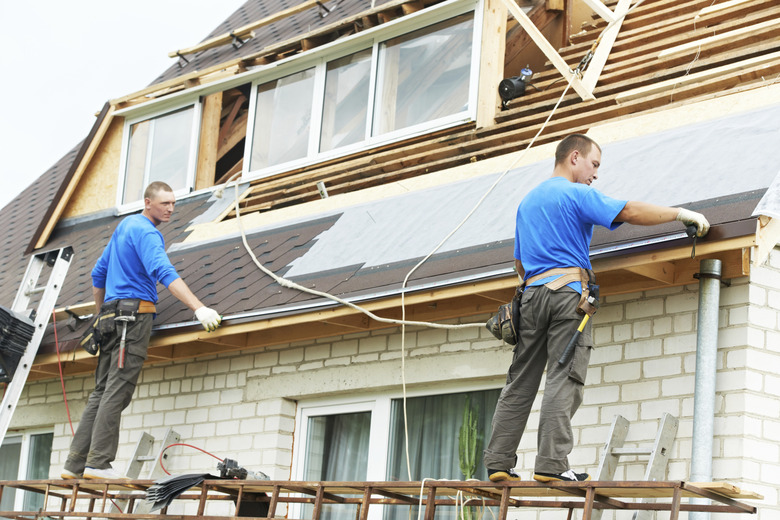How To Install Drip Edge Flashing On A Roof
Things Needed
-
Tape measure
-
Tin snips
-
Hacksaw
-
1-inch roofing nails or screws
-
Hammer or drill and bit set
-
Moisture barrier
-
Roofing cement
-
Putty knife
To prevent rainwater from curling around the lower edge of the roof decking and seeping into the soffits or siding, roofers install L-shaped flashing under shingles and composite roofing. Known as drip edge, this flashing may be manufactured from galvanized metal, aluminum or vinyl, and it goes on before you install the roof covering. Besides keeping water away from the soffits and directing it into the gutters, drip edge keeps moisture and small critters out of the gap between the lower edge of the roof and the upper edge of the fascia.
Step 1
Measure the length of the eave you need to cover with drip edge, using a tape measure. Select enough lengths of flashing to cover it, allowing for overlap. When you need to cut the flashing, do it with tin snips or a hacksaw.
Step 2
Install the drip edge by fitting it on the roof eave, pushing it tightly against the edge of the plywood and nailing or screwing it down. Use 1-inch galvanized roofing nails or 3/4-inch exterior screws. Space the fasteners by about 12 inches. Overlap two pieces of flashing that meet end to end by at least 1 inch.
Step 3
Lay the moisture barrier that goes between the roof deck and the shingles after installing drip edge on the eaves. The moisture barrier goes over the flashing, flush with the edge.
Step 4
Fasten drip edge to the rake — which is the part of the roof that extends from the peak to the eave — after laying the moisture barrier. The drip edge should completely cover the edge of the moisture barrier. Cut the end of the rake flashing flush with the edge of the eave.
Step 5
Apply roofing cement when installing drip edge on an existing roof. Coat the flat part of the flashing that sits on the deck, using a putty knife. Lift the shingles, slide the drip edge underneath them and position it so that it extends over the gutters, then replace the shingles and push down to seat the drip edge. You may have to drive a few nails or screws to hold it in place.
Tip
You don't need to seal drip edge with caulk or sealant. The roof covering prevents water from getting underneath it.
The lower edge of the flashing goes in front of the fascia, so the fascia must already be installed before you install the drip edge.
Warning
The safest way to install drip edge is from a ladder. Avoid installing it while standing on the roof unless you are securely connected to a harness.
